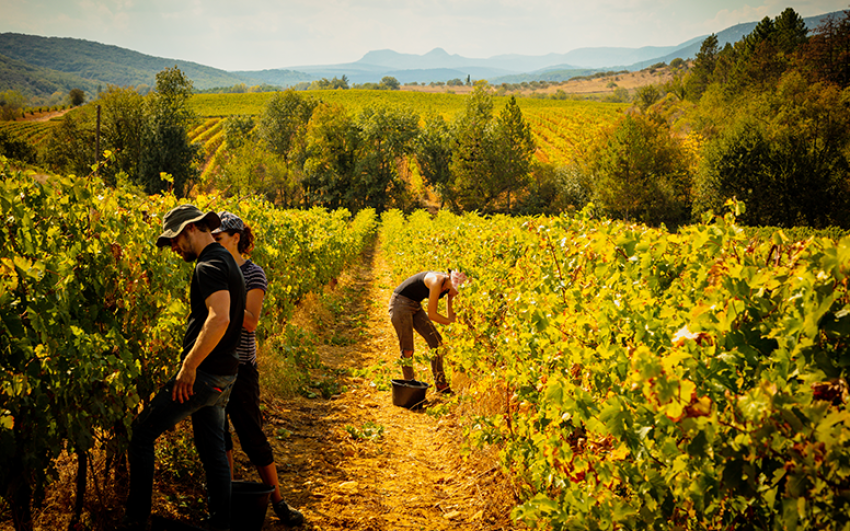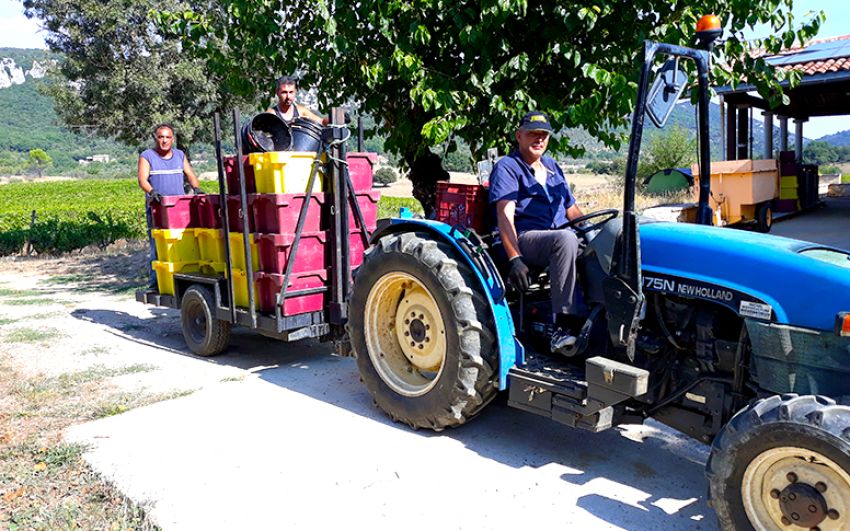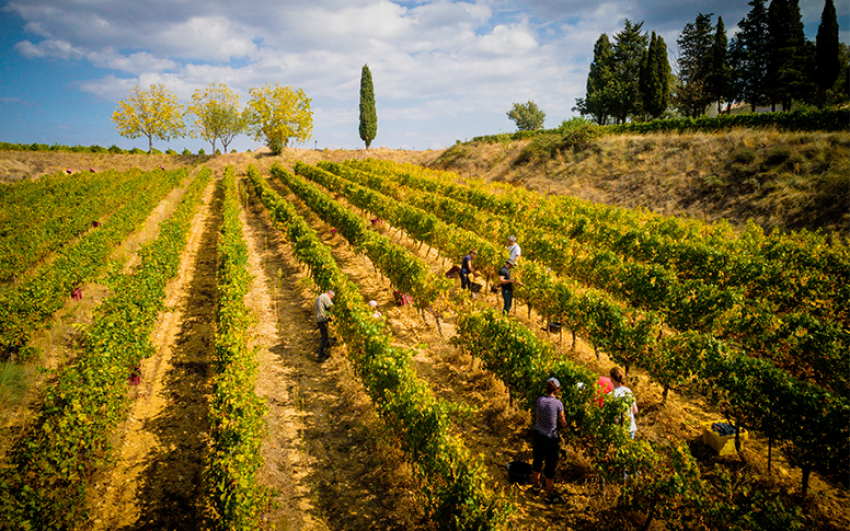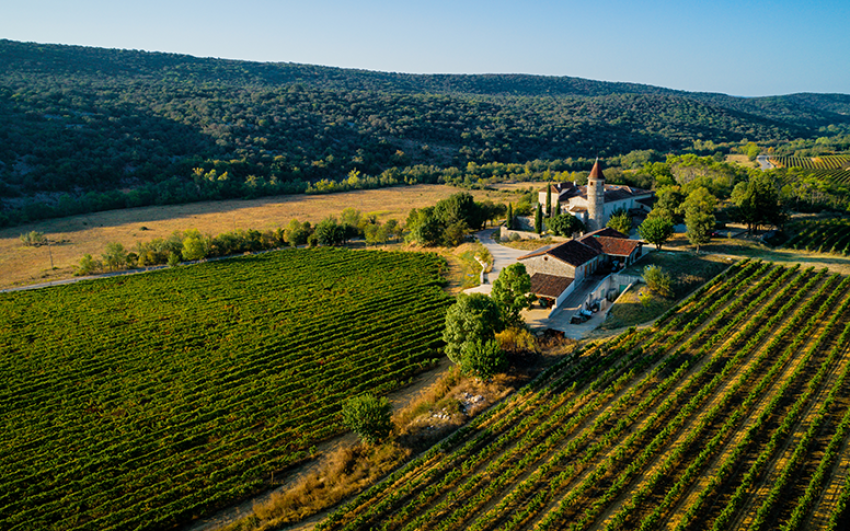Domaine
de Sauzet
From yesterday to today
The history: A re-creation
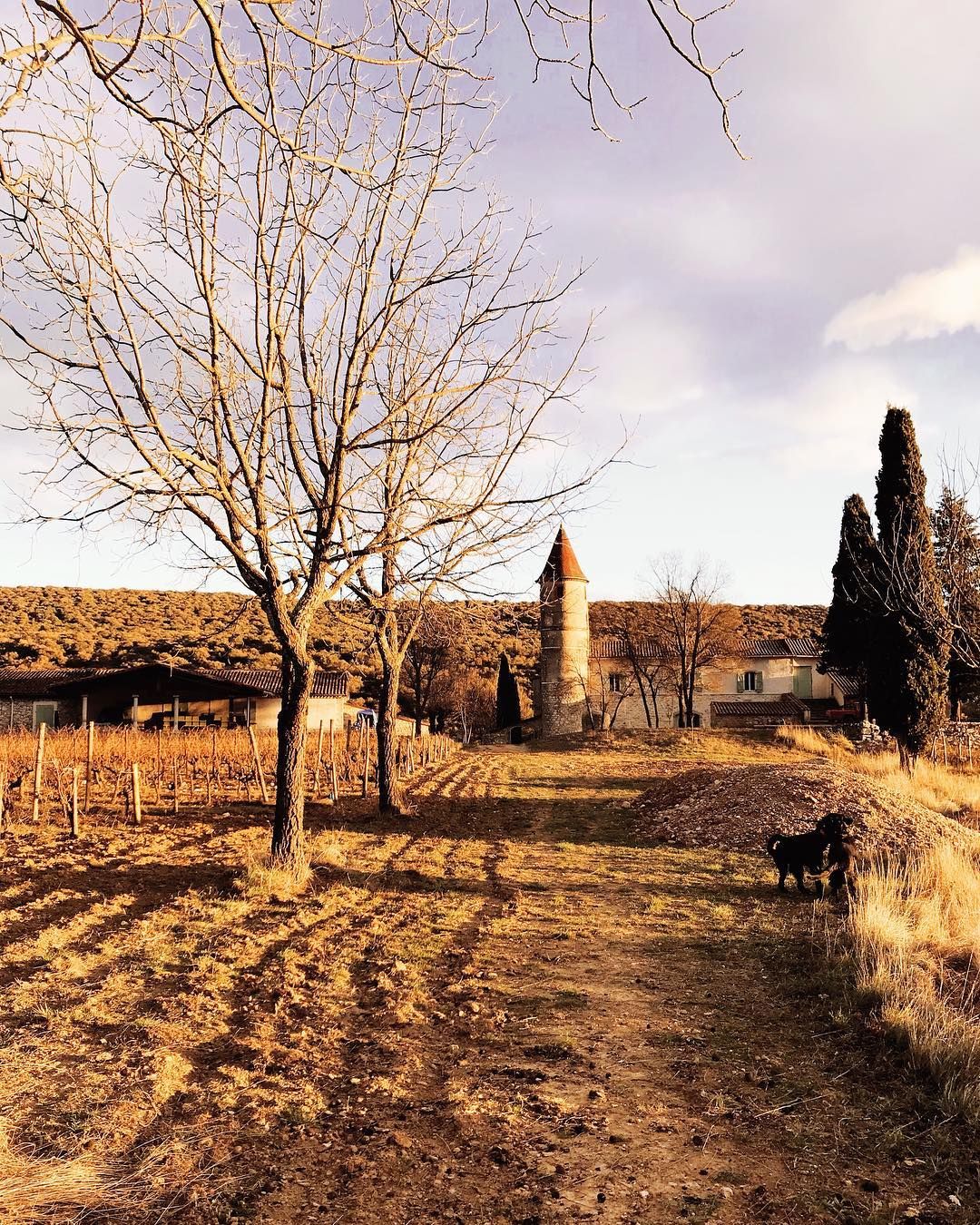
In 2006, after two years of winemaking experiments— not garage wines, but stable wines crafted in the old stables!— comes the big leap.
The old cellars are completely renovated, complemented by an underground cellar for barrel aging and bottle storage, and a welcoming and sales cellar in an old vaulted room.
The most modern winemaking equipment is installed, remaining modest, simple, precise, and efficient. Thus, the old gravity structure is preserved, allowing the harvested grapes to be brought in crates to the top of the tanks: sorting and destemming are done directly on the tanks, with the grapes naturally falling into the tanks by gravity—no screws, no crushing, just beautiful berries filling the tanks, grape by grape, plot by plot.
In 1995, François Massol acquires a beautiful and vast ruin...
...a young creator and entrepreneur, then 34 years old: buildings in ruins, trees piercing through rooftops, brambles where once stood the most beautiful and ancient vines in the region, old casks rotting in magnificent but open cellars, exposed to the elements...
It was love at first sight, a burst of inspiration, a moment of madness, and above all, a vision: this very old vineyard, already planted with vines in the 16th century – and perhaps even earlier, with buildings dating back to the 11th century, one of the flagship properties of the... ...upper Hérault Valley and the foothills of the Cévennes, had the potential to be reborn from its state of abandonment.
In a breathtaking natural setting, just 30 minutes north of Montpellier, this magnificent castle dominated by its tower was destined to be at the heart of the recreation of a «new old vineyard».
Stone by stone, vine by vine, François invests all his savings and available time. He replants the uprooted vines, takes over old vines in the vicinity, becomes a winemaker, and learns his second trade on the job, listening to all the different perspectives—from the village elders, colleagues, technicians, oenologists, etc.
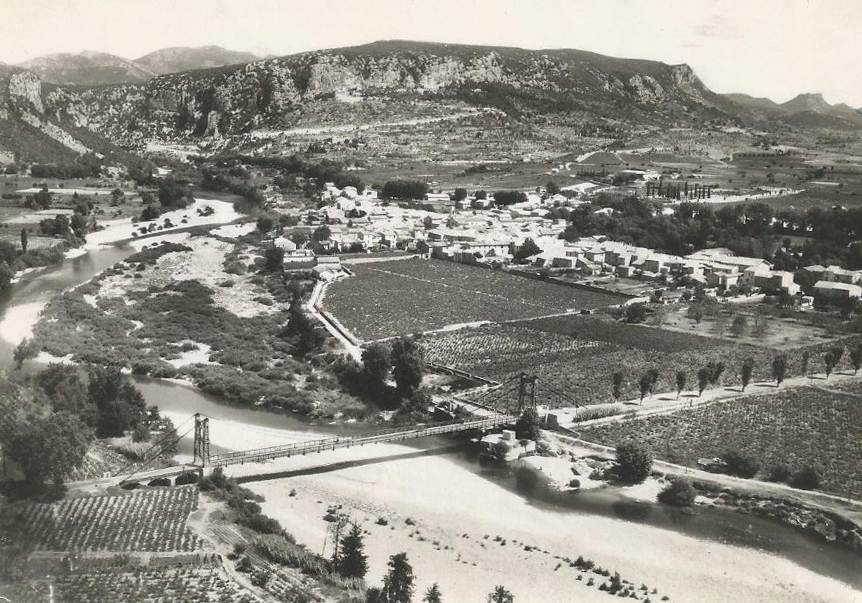
The first choice was obvious
In such a beautiful natural setting, how could one not work with total respect for the soils and the vines?
The second choice
Small quantities, high quality
When many experts agree that Languedoc is the « future Eldorado of new winemakers in the 21st century », it is only logical to set the goal of doing the best possible at every stage of vine cultivation, winemaking, and aging, aiming to flirt with excellence.
It is within this movement, combining the viticultural tradition of Languedoc with modern techniques, that we compose our score.
The soils
The terroir
The terroir

- Clay-limestone soils,, but also rolled pebbles, marl, and silts: a great complexity of soils that is found in our wines.
- A Mediterranean climate, Sunny, dry, yet also cool, with good water reserves replenished by the abundant rains of the famous Cévennes episodes in autumn and winter. The intense winter cold, with temperatures dropping as low as -15°C, eradicates parasitic fungi. The high daytime temperatures in summer and cool nights allow the grapes to achieve optimal phenolic maturity.
- Thanks to these unique climatic conditions which leads to late harvests (between September 15 and October 15), we can pick our grapes at their full maturity, without fear of excessively high sugar levels producing overly alcoholic wines.
- The temperature variationsbetween summer and winter, and especially between day and night in summer, create ideal conditions for slow and progressive grape ripening.
These conditions are also perfect for promoting the complexity and aromatic freshness of our wines. - Finally, thevery low agricultural pressure in our valley surrounded by dozens of kilometers of woods, mountains, and scrublands, combined with the dry and healthy climate, provides us with very low exposure to vine diseases, thus minimizing the need for protection.
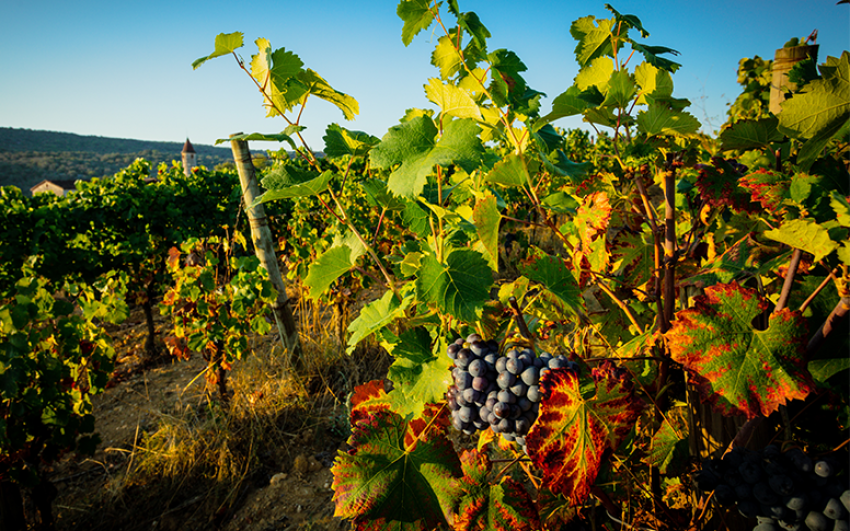
The grape varieties
The vines
The vines

Our vineyard consists of vines planted between 2000-2002 around the estate and old plots located in the surrounding municipalities. All situated on hillsides, thriving, and bathed in the sun of the scrublands.
Thus, the old vines of Grenache, Carignan, Aramon, Cinsault, Alicante Bouschet, Merlot, and Syrah blend with younger vines planted with Syrah, Grenache, Mourvèdre, Cabernet Sauvignon, Cabernet Franc, and Grenache Blanc, Grenache Gris, Viognier, Roussanne, and Vermentino for white wines.
This wide variety of Mediterranean and Atlantic grape varieties, ranging from young vines to sometimes very old ones (one of our vineyards was planted in 1934!), managed in double Cordon de Royat or Gobelet (in the old-fashioned way!), provides us with a very broad range of blends, further enhancing the aromatic complexity of our wines.
Each plot is meticulously tended to: short pruning, yield control through soil cover in some, bud removal or green harvesting in others, plowing with inter-row cultivation, organic amendments... all the way to hand-harvesting in crates, with a selection of the best grape clusters.
Production and Développement
As of today, Domaine de Sauzet produces its grapes on 23 hectares.
By 2021, this area will be expanded to 21 hectares, following the planting of 2 hectares and the conversion to organic farming of 3 hectares of old vines.
New planting projects are expected to bring this area to around 30 hectares by 2023. Our estate is now known and recognized, and sales are increasing every year, both in France and internationally.
We produce an average of 420 hectoliters of wine per year, equivalent to 55,000 bottles. All of our production is marketed in bottles: no bulk or bag-in-box.
The average yield of our vines is low: 26 hectoliters per hectare, compared to the authorized 90h/H! Quality comes from controlling yields in the vineyard: fewer fruits, but more flavorful! For better juice!
Les vinifications
Dare to say it :
We work with precision !
Each plot is manually harvested at perfect ripeness and then vinified in its own tank.
The vinifications

Dare to say it : We work with precision !
Each plot is manually harvested at perfect ripeness and then vinified in its own tank.
After eliminating the « bad » After removing clusters and berries, the red grapes are destemmed directly into the tank, crate after crate : the « berries » fall by simple gravity, without crushing. The alcoholic fermentation occurs simply, either with indigenous yeasts or with the help of selected yeasts, depending on the specific circumstances and the vintage.
Depending on the plots, grape varieties, vintage, and the desired cuvée, we extract more or less through manual pump-overs and punch-downs to achieve wines with varying levels of tannins, always respecting the juice of « fruit ».
Our rosé is assembled from pressed or saignée (bled) juice, depending on the grape varieties.
The white is obtained by direct pressing of fresh clusters, fermented at low temperatures, and then stirred on lees.
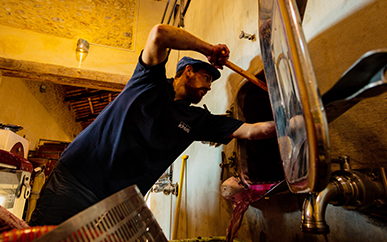
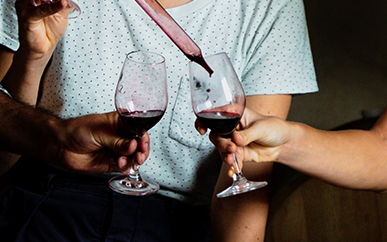
The sulfites
Even though sulfur is an old friend of wine— it's what allowed wine to travel since ancient times! The topic has become very sensitive today, and rightfully so!
The sulfites

Even though sulfur is an old friend of wine— it's what allowed wine to travel since ancient times! The topic has become very sensitive today, and rightfully so!
-
Sulfur dioxide (SO2 or sulfites) serves two main functions:
- One is antiseptic (regulating the populations of yeast and undesirable bacteria that could turn it into vinegar!)
- The other is antioxidant (protecting the wine from excessive oxygen exposure that could prematurely age it.) So, it is a valuable aid for the long-term preservation and aging of wines.
Unfortunately, it has two significant drawbacks : it is the culprit behind your morning headaches after indulging a bit too much the night before, when the wine was too laden with sulfites. But above all, an excess of sulfites alters certain aromas and transforms the « fruit » into wine.
Using fewer sulfites is possible if:
- The grapes entering the tank during harvest are clean, without diseased grapes (no need for « disinfect » the healthy grapes!) If the vines are not too laden with well-spaced grape clusters, the risk of mold decreases : We remove buds from our younger and more productive vines. If necessary, we drop clusters (green harvesting), which also helps limit yields and improve the quality of the berries. As for our old vines, they self-regulate, producing little but very well !
- The harvest is done by hand, in small crates that protect the clusters from being crushed. The pruning shears are selective, and questionable bunches fall to the ground, not in the crate. Another selection is made at the time of transfer to the tank or press.
- Quality is always prioritized over quantity: that's our constant objective.
- Impeccable hygiene is an obsession in the cellar: constant cleaning of equipment (crates, destemmer, pipes, pumps, tanks, press, etc.). Our winemaking cellar is very old but equipped with recent, well-maintained, and efficient machinery.
- Finally, the small quantities produced enable us to be consistently vigilant, both in winemaking and aging.
All these factors allow us to work today with very low sulfite levels. For reference, the maximum authorized sulfite levels are 150 mg/l for traditional red wines and 100 mg/l for organic red wines. The average for our various cuvées is below 50 mg/l for « young » red wines and barrel-aged wines combined.
For the past 4 years, we have been producing a cuvée, Madame M, without any sulfites. It is what is known as a « natural » wine, with impressive success! (Choosing to use this term)
ince 2017, another cuvée, « Jeanne et André » is also produced without sulfites.
The first one is to be enjoyed young, showcasing its fruity character.
The second, our only single-varietal Syrah cuvée, very tannic and pure, is to be consumed after allowing it time to « mature » under proper storage conditions.
Without being « purist » about sulfite-free wines— it remains an excellent aid for preservation, especially for « aged » and cellar-worthy wines—our efforts aim for an even further reduction in the use of sulfur.
The Organic
From our very first plantings, we have always cultivated our vines organically. We obtained organic certification in 2012. It is a guarantee « set in stone »...
Le BIO

From our very first plantings, we have always cultivated our vines organically. We obtained organic certification in 2012.
It is a guarantee « set in stone » for our customers, especially those from abroad, who want to be reassured about our viticultural and winemaking practices. The specifications are strict and reassuring.
It's not even a constraint anymore, as it seems obvious that it's the right path to follow. The exceptional natural environment of the estate only reinforces our choice for a cleaner agriculture.
Our valley is surrounded by kilometers of scrublands and woods, protected, far from cities, without intensive agriculture. This particularly healthy environment is rich in diverse and wild fauna and flora. Let's preserve them!
However, I would like to add a caveat: I want my customers to come to the estate because the wines are good, not just because they are organic or natural.
But if they are good and also organic or natural, then that's pure happiness!
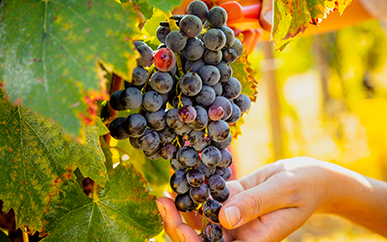
The range of wines
Philosophy of wines
We currently produce 2 white wine, 2 rosé wines, 1 sparkling rosé, vinified by « traditionnal method »
and 8 red wines.
However, we have some plots classified as AOP. It is possible that in the future, we may present wines that are both IGP and AOP for distribution network reasons. Again, I want my customers to come to me because the wines are good, not because of their classification in one appellation or another!
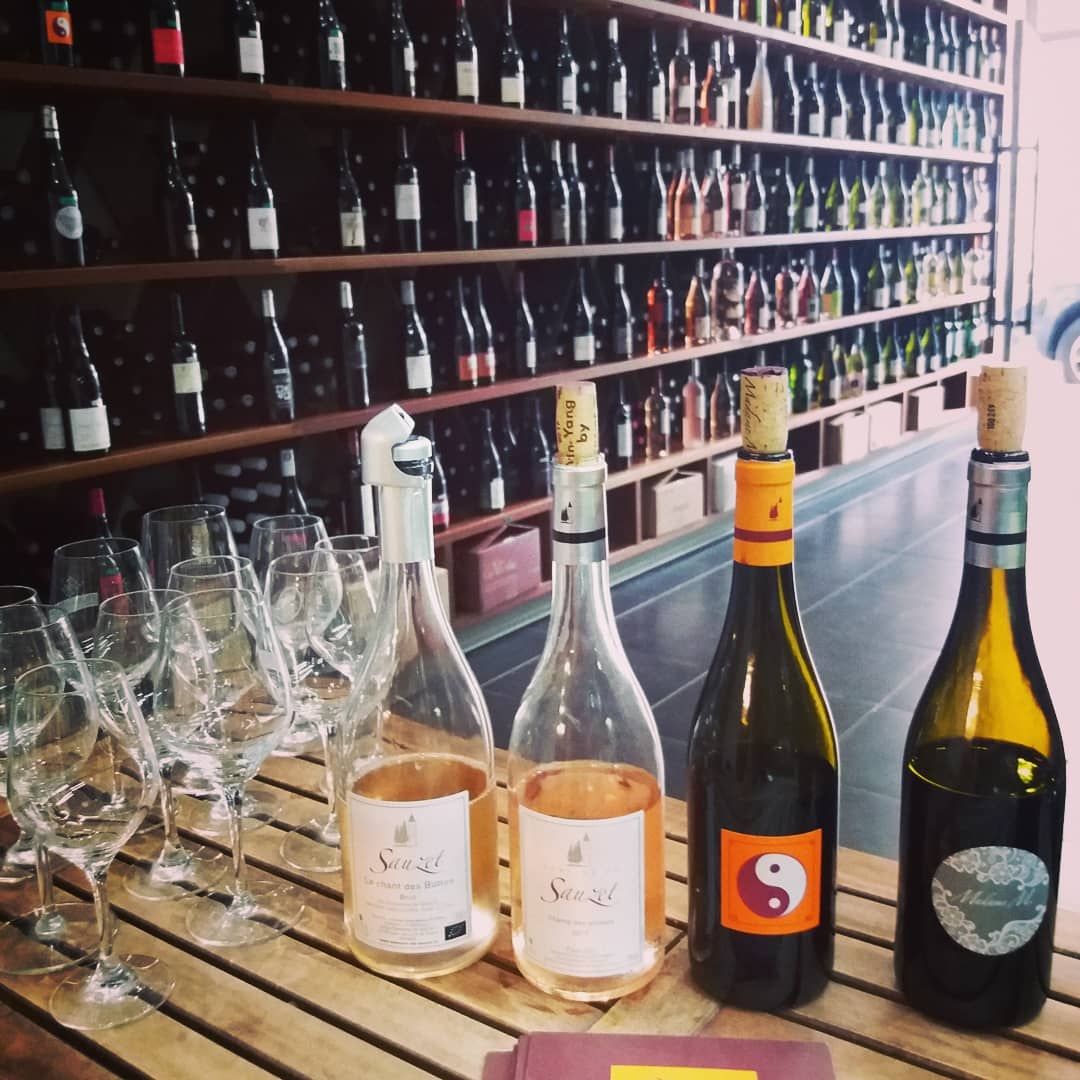

Route de Montoulieu ●
34190 Saint-Bauzille-de-Putois ● tél. fixe 04 67 73 34 84
06 29 35 23 66
